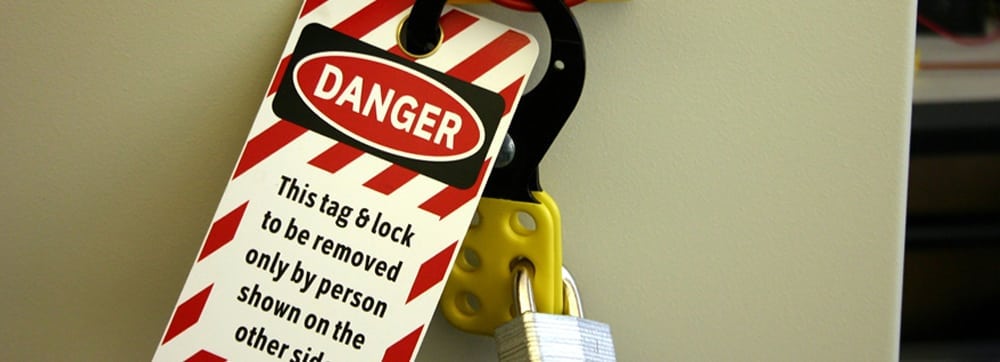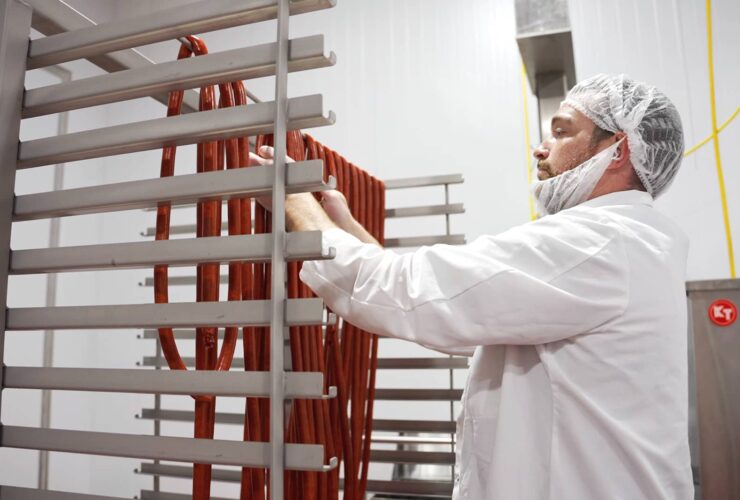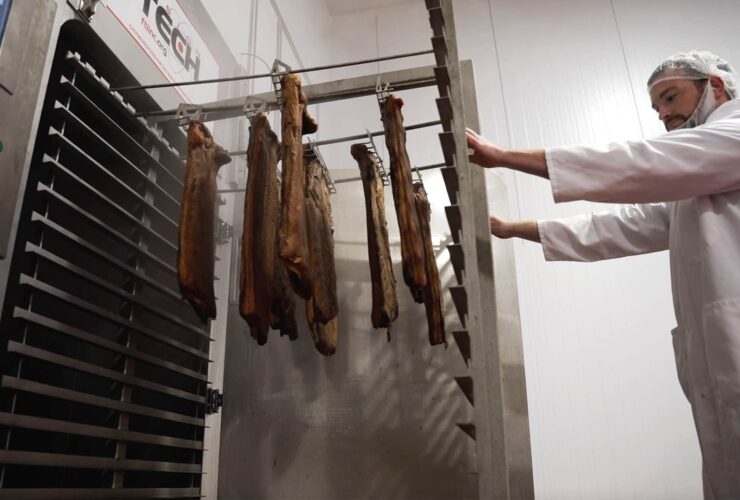Commercial ovens, as with any food processing equipment, can pose serious safety hazards for employees.
Burns, pinch points, crush points, cuts, chemical burns, carbon dioxide suffocation, or being trapped in an oven while in the cook cycle are all possible if proper care is not taken when operating a commercial smokehouse, dehydrator, or steam oven — leading to serious injury or death.
As a food processing company, it is imperative that proper safety signs be posted on and around any commercial oven to notify employees of potential dangers associated with this piece of equipment.
Safety Signs
Post these 8 safety signs near your commercial ovens to improve worker safety.
Read Operator’s Manual
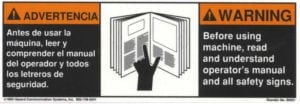
A commercial oven is an advanced piece of technology with a number of safety hazards when not used correctly. Reading and understanding the operator’s manual, and receiving proper training is essential for improving worker safety and reducing the risk of serious injuries.
Read Operator’s Manual safety signs will help inform all employees that the only people approved to operate, work on, clean, or even touch the equipment are those who have been properly trained.
Burn Hazard
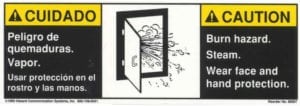
The typical operating temperature of a food processing oven can exceed 200°F, while ovens designed for high-temperature operation can reach up to 400°F — both high enough to seriously burn operators if they come in contact with steam.
Operators should always wear face and hand protection if it is necessary to open oven doors during processing, and know where burn hazards are located on an oven:
- Live steam truck rails (below)
- Steam humidity (above)
- Gas burners (open flame – above)
- Electric coils
- Steam coils
Burn Hazard safety signs will warn operators of the risk of being burned if proper care and protection is not used.
Pinch, Crush, and Cut Points
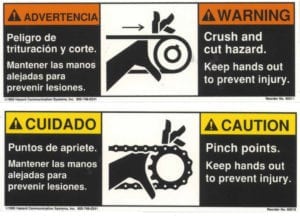
Any moving parts on a commercial oven pose a pinch, crush, or cut point if proper precautions are not taken — and can result in serious injuries.
Pinch, crush, and cut points include:
- Oven doors
- Dampers
- Chains
- Shafts
Pinch, Crush, or Cut safety signs should be posted to protect employees from the dangers of moving parts on the oven.
Confined Space
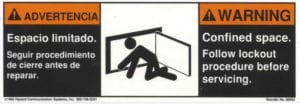
When performing maintenance on a commercial smokehouse, dehydrator, or steam oven, it is possible that personnel will need to enter small, confined spaces that pose a number of safety risks, including the oven being turned on while personnel are still inside.
Lock-out Tag-out procedures should always be followed and help should be nearby and observing during repairs.
Confined Space safety signs will alert employees to the potential of being trapped and remind them that lock-out tag-out needs to be performed.
Lock Out / Tag Out
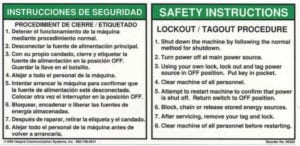
Lock-out Tag-out procedures should always be followed when performing maintenance on a commercial oven. Due to the size, components, and multiple utilities used in an oven, it is possible for serious injury or death to occur if proper lock-out tag-out procedures are not used.
Lock Out Tag Out safety signs will remind employees of the dangers associated with a commercial oven and the need for proper lock out tag out procedures to be performed.
Cleaning Chemicals
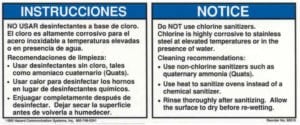
Cleaning solutions frequently use caustic chemicals that can cause injury to the skin, lungs, eyes, and other parts of the body.
Cleaning crews should always wear protective clothing and eye protection when cleaning a commercial oven, and refer to the chemical solution’s material safety data sheet (MSDS) prior to cleaning.
Cleaning Chemicals safety signs will help protect employees from the dangers of chemical solutions and remind them to take proper precautions prior to cleaning.
CO2 Emissions
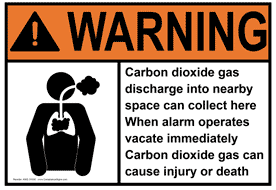
Gas burner-powered commercial ovens pose the risk of carbon dioxide gas poisoning, especially when working in proximity to the gas burner or in confined spaces.
The gas burner area should always be ventilated prior to any employee entering to prevent poisoning and suffocation.
Carbon Dioxide Gas safety signs will notify employees of the dangers and presence of carbon dioxide gas in the area and help eliminate the risk of suffocation and death.
Safety Release Handles
Prior to use, all operators should be able to locate the safety release handle on all doors within a commercial oven — just in case the unthinkable happens and they get trapped inside a closed oven, knowing where the safety release handle is located and what it feels like (the oven will be dark when locked in) can save their life.
This should be performed during training.
A Safe Oven
When investing in a commercial smokehouse, dehydrator, or steam oven, it’s important to ask the manufacturer what safety features have been built into their model of oven. Safety releases, warning signs, and even alerts on the oven control panel and sirens can help reduce the risk of employee injuries and improve the safety in your facility.
Image source: iStock Photo


